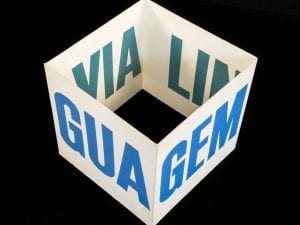Alfredo Boulton (1908-1995) was an esteemed Venezuelan architect, critic, historian and photographer. He spent his life championing the country’s artists and published more than 60 books, including his influential three-volume Historia de la Pintura en Venezuela (1964-1972). Despite being well known at home, his legacy remains largely unrecognised internationally. Getty Research Institute seeks to restore Boulton’s prominence with its latest exhibition, Alfredo Boulton: Looking at Venezuela, 1928-1978.

The first section, called Boulton to Photographer, explores his evolution behind the camera. Boulton’s work was varied, from close ups of people to sprawling landscape shots. In an interview with his niece María Teresa Boulton, the artist details the vibrant photography scene in Venezuela. Ignacio García Gómez and Carlos Herrera are two fellow image-makers he recalls meeting. United by a “common interest in artistic photography”, they discussed a variety of topics and travelled to various cities including Guarenas, Guatire and Antímano. The people and places he saw would become immortalised in his images.

Boulton was also committed to bringing Venezuelan visual artists together and shining a light on their work. In the early 1950s, he began renovating a colonial-era mansion on Margarita Island, Pampatar. Boulton paid attention to every detail, from positioning the furniture to sourcing the marble. He bought and commissioned pieces from renowned practitioners, such as painters Armando Reverón and Arturo Michelena. On the ceiling hung an enormous mobile made by their inventor, the renowned sculptor Alexander Calder (1898-1976). Called the Double Gong (1953), bright orange, yellow, bronze and blue leaf-like forms sprout from the metal wire. Surrounded by these meticulously selected decorations, he hosted parties which brought together key figures. After the remodelling was completed, Boulton published everything in the house and its exact placement in La Casa. His writing, photography and interior design are prime examples of a life-long dedication to promoting and preserving Venezuelan modern art.
Getty Research Institute, Alfredo Boulton: Looking at Venezuela, (1928-1978) | Until 7 January
Words: Diana Bestwish Tetteh
Image Credits:
- Flora, la Belle Romaine, ca. 1940s, printed in 1990s Alfredo Boulton (Venezuelan, 1908–1995) Gelatin silver print on foamcore Getty Research Institute Partial donation of the Alberto Vollmer Foundation 2021.M.1.4.
- El Silencio, no. 40 (Silence, no. 40), ca. 1945, Alfredo Boulton. Partial donation of the Alberto Vollmer Foundation. Getty Research Institute, 2021.M.1.
- Pampatar (la casa) (Pampatar [the house]), ca. 1954, Alfredo Boulton. Partial donation of the Alberto Vollmer Foundation. Getty Research Institute, 2021.M.1.




